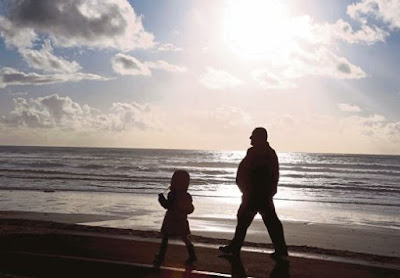I was unusually silent for a number of days and that was
terribly inconvenient. Well, laryngitis does not discriminate and I was reduced
to mousey whispers at best. How true it is that you never miss something until
it's gone, in this case, my voice.
To humour myself, I attributed it to the possibility of viruses
hidden on the walls of WW II underground tunnels as I had just returned from a
historic tour of underground Berlin
The beloved who always wanted to live a quiet life said, 'I had
a quiet weekend' . The strange thing was, everyone else whispered to me too and
that was really funny.
I’m talking about entering the Room of Silence (Raum der Stille)
in Berlin
It is a pretty small room where visitors can pick up a symbolic
stone and remain quiet for some time. There is a wall hanging by Hungarian
artist Ritta Hager on the theme of ‘light penetrating the darkness’. This room
resonates the call for tolerance between all nationalities and beliefs.
This reminds me of the necessity to be silent and to reflect.
Seemingly, there is scientific evidence that shows that adding 30 minutes of
silence to a daily routine can reduce stress.
Silence has become a stranger to most of us. People are uneasy
when we are quiet and assume that something is wrong. There are those who talk
non-stop, as if they are afraid of being silent during a conversation.
I believe that most of us get out of bed in the morning and
almost immediately reach out for our mobile phones and start checking the
messages, alerts or calls that were left there while we were sleeping.
We rush to the shower, make a cup of coffee and switch on the
‘noise’ around us – be it the radio or the television. Then we get into our
cars and listen to the airplay or our favourite music. When we reach the
office, we talk and work or listen to more talk.
If it is not external noise that we deal with, there is also a
stream of internal noises in our heads. Our minds start ticking and we start
planning or worrying or arguing and justifying with our own thoughts.
Certainly, there is a lot of chatter going on.
Choosing a specific period of the day to be quiet can actually
help us to deal with life’s challenges better as we capture the dynamic and
dissonance in our hearts and the world that we observe. The adage that we are
human beings who have somehow transmogrified into human doings is very true.
It is very strange but when I stand back in silence and reflect,
things fall into perspective. I am in control of my emotions and circumstances
rather than be controlled by them. I can be centred and still while everything
else around me rushes by.
My immediate responses to challenging situations or ugly
exchange of words morph into a different level of tolerance and understanding.
Somehow the hurt inflicted upon me the night before does not sting as much.
Because the rhythm of the body slows down, there is rest.
Close the door, breathe and then spend some precious moments in
silence before the chatter.
It is time to power down intentionally.
It is time to unplug.
It is time to unplug.
This article was originally printed in the NEW STRAITS TIMES MALAYSIA 21 FEBRUARY 2016 http://www.nst.com.my/news/2016/02/128644/taking-time-be-silent











